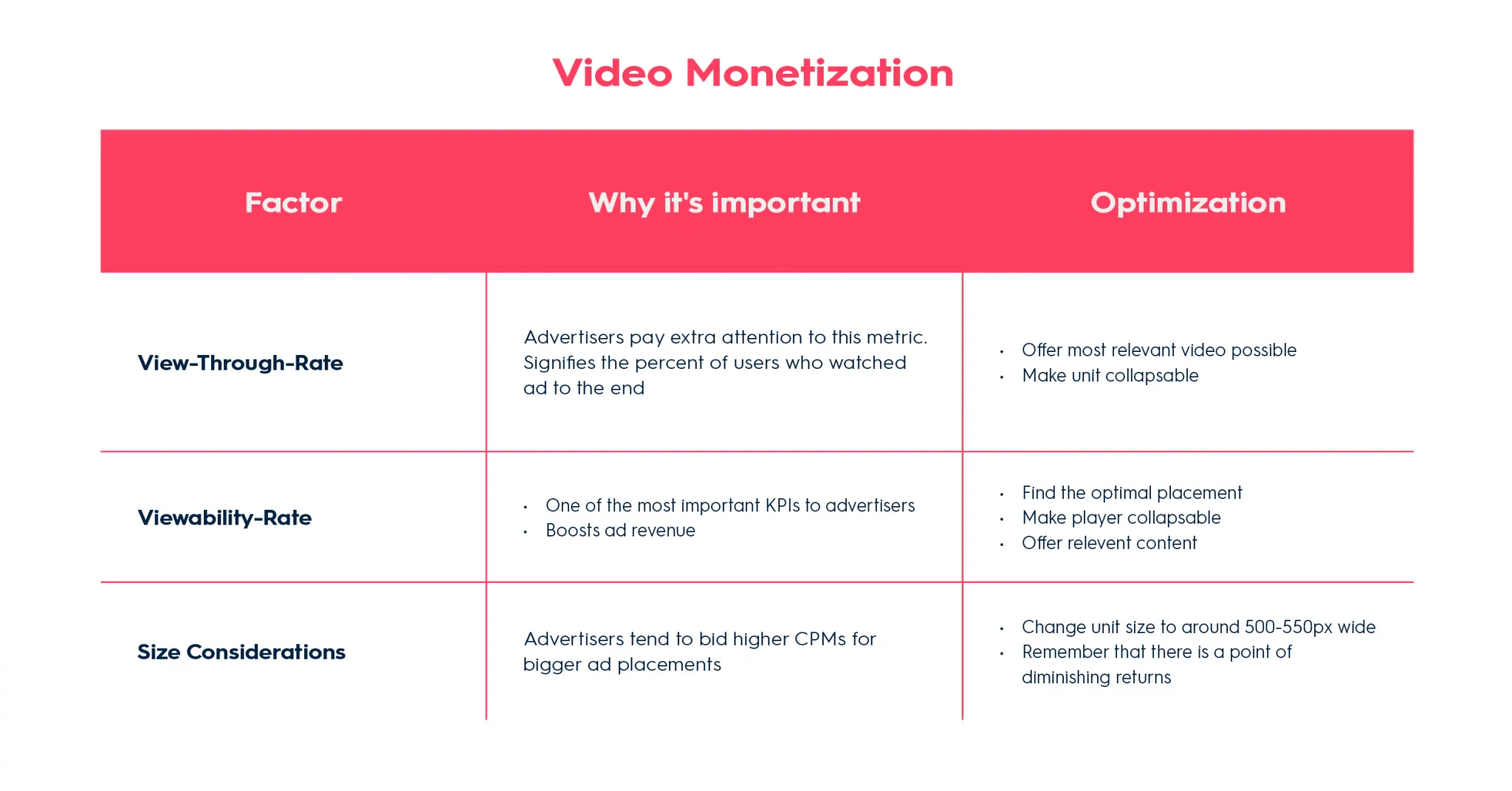Much of what we do here at Primis revolves around the idea that giving users video that they want will increase intentional video consumption, and lead to a significant increase in video monetization. So, we’ve divided the factors into 2 groups; video consumption, and video monetization.
Video consumption
Optimizing these elements will create a positive and engaging user experience with video on publisher sites:
Contextually Matched Videos
Although it is not an absolute rule, users tend to watch a video that is contextually related to the article they are reading. In a study of our enhanced contextual algorithm, we’ve found that users engaged 72% - 143% more with videos that they have been contextually matched vs. a random playlist. The tricky part is finding tech that understands context and as well as having enough videos to match every article.

Integrated/Native-Looking Video Player
A beautifully designed video player that fits in and complements the article that the user is consuming will get your audience’s attention. Users prefer a seamless content experience, many times plainly ignoring elements that feel out of place.
Robust Video Library
Whether you produced the videos or you're using syndication, the more videos you have and the more often they are updated, the better. The point here is to have enough videos so that there is a right video for every user’s interest, at the right time.
Player Position on The Page
In digital video optimization, it is all about location. The two factors to consider when deciding placement are the viewability of the unit and the content. For viewability, the most important optimization is making the unit collapsable. When it comes to content, a good rule of thumb is placing a unit in the text at the top of an article, if the video displayed was created for that article. However, if the videos you are displaying are offering additional videos, placing the unit slightly lower on the article may be the right move. The top priority should still remain the viewability of the unit, which is why a sticky unit that docks in a lower part of the article could be a good solution.
Video Monetization
After creating a constant quality flow of engaged video ad inventory, it is time to optimize that inventory and make it appealing to advertisers. Here are the factors that publishers measure and improve upon to have the biggest impact on monetization:
View-Through-Rate
Sometimes called Completion Rate, this metric signifies the percent of users who watched the ad to the end. Advertisers are first and foremost looking for an audience that will watch their ads to the end. The most important way to impact this KPI is by providing videos that are worth the user’s wait. However, the technical change that will have the biggest effect on VTR is implementing a collapsable video unit that will keep the player in view, even while the user scrolls.

Viewability-Rate
Obviously, advertisers need their ads to be seen. That is why ad viewability, which is based on the publisher’s ad placement viewability, is one of the most important KPIs to advertisers. And, if it is so important to advertisers, it should be as important to publishers that want to boost their ad monetization. Aside from the aforementioned collapsibility of the video unit and delivering relevant videos, additional important measures may or may not include placing the unit above the fold, near a highly used section of the page, or changing the size of the unit.
Size Considerations
Understandably, advertisers believe that the bigger their ad is, the more impact it can have on a user. That is why they will tend to bid higher CPMs for bigger ad placements. In a Primis study, publishers that increased the size of their video player saw an immediate 25% increase in revenue from that unit. However, a unit that is too big will stop bringing in higher bids and will harm the user experience. It is a game of balances, where the optimal size is around 500-550px wide.
Succeeding With Video
Optimizing these factors requires constant learning and work. As any publishing professional who deals with video knows, whether they are on the editorial end or adops, there is always another test and another optimization that may boost performance. There is no substitute for trial and error, or knowing the unique characteristics of an audience. However, defining core principles that will deliver a quality video experience to users, and sexy video ad opportunities for advertisers should be the basis of any publishing video strategy.







